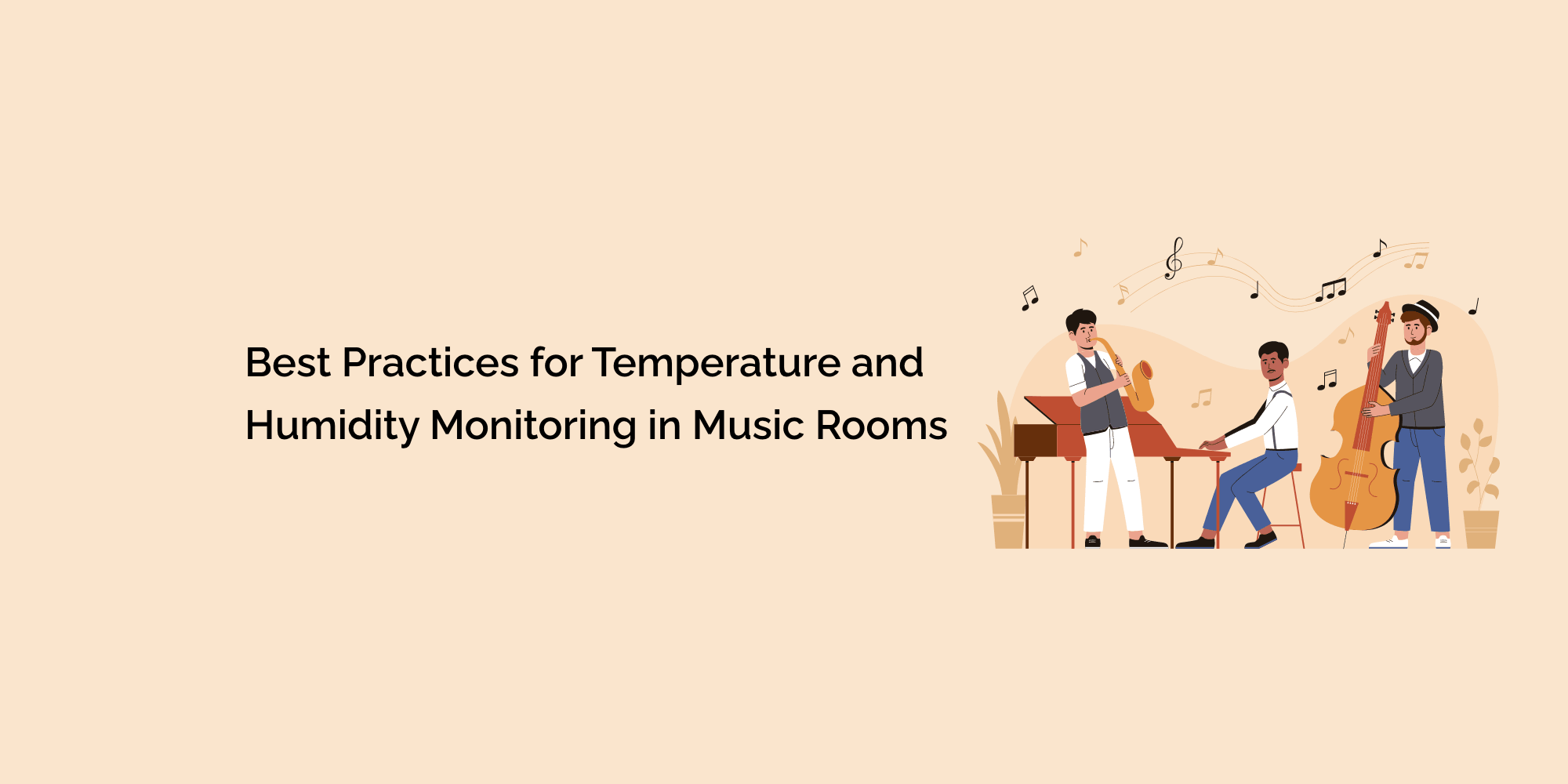Music rooms are sanctuaries where melodies are born, nurtured, and brought to life. These spaces are not only where musicians practice and create, but also where precious instruments find their home. To ensure that the environment is conducive to both creativity and instrument preservation, proper temperature and humidity control is essential. In this blog, we'll explore the best practices for temperature and humidity monitoring in music rooms, uncovering the techniques that maintain the delicate balance between optimal conditions for instruments and the creative energy of musicians.
The Art of Balance: Temperature and Humidity in Music Rooms:
Temperature and humidity levels can significantly impact both musicians and instruments:
-
Instrument Health: Fluctuations in temperature and humidity can lead to cracks, warping, and changes in sound quality in instruments.
- Musician Comfort: Musicians require a comfortable environment to perform at their best, both mentally and physically.
Setting the Right Parameters: Ideal Conditions for Music Rooms:
Understanding the optimal temperature and humidity ranges is the first step:
-
Temperature Range: The temperature in music rooms should ideally be between 68°F to 72°F (20°C to 22.2°C).
- Humidity Sweet Spot: A relative humidity level between 40% and 60% is generally recommended.
The Role of Monitoring Systems:
Temperature and humidity monitoring systems are instrumental in maintaining suitable conditions:
-
Real-Time Insights: Monitoring systems provide constant updates on temperature and humidity levels.
-
Alerts and Notifications: These systems offer timely alerts in case conditions deviate from the desired range.
- Data Analysis: Historical data can help identify patterns and trends in the room's climate.
Instrument-Specific Needs: Tailoring for Different Instruments:
Each type of instrument has its own climatic requirements:
-
String Instruments: Violins and cellos thrive in environments with consistent humidity to prevent changes in sound quality.
-
Woodwind and Brass Instruments: Instruments like clarinets and trumpets can benefit from steady humidity to maintain tonal quality.
- Pianos: Pianos require humidity control to prevent wood components from swelling or shrinking.
Humidity Control Strategies:
Effective humidity control methods contribute to a stable environment:
-
Humidifiers: These devices add moisture to the air in dry conditions, maintaining optimal humidity levels.
-
Dehumidifiers: In humid climates, dehumidifiers remove excess moisture to prevent mold growth and wood swelling.
- Instrument Cases: High-quality cases with humidity control compartments offer portable protection for instruments.
Placement of Monitoring Sensors:
Strategic sensor placement is key to accurate monitoring:
-
Instruments Cases: Placing sensors within instrument cases provides localized data for instrument-specific monitoring.
- Room Corners: Sensors positioned in corners provide a holistic view of the room's climate.
Regular Maintenance and Calibration:
Maintenance ensures the accuracy of monitoring systems:
-
Battery Checks: Regularly check and replace batteries in wireless sensors.
- Calibration: Calibrate sensors periodically to ensure accurate temperature and humidity readings.
Preventive steps contribute to long-term instrument health:
-
Regular Inspection: Routinely inspect instruments for signs of damage, which could be a result of poor climate conditions.
- Prompt Action: Respond immediately to monitoring alerts to prevent potential damage.
Conclusion
Music rooms are more than spaces; they're realms of creativity and emotion. To harmonize the energies of musicians and their instruments, temperature and humidity control is paramount. By implementing best practices in monitoring and maintenance, musicians can ensure their instruments remain in peak condition, ready to produce melodies that resonate with hearts and souls. A music room with optimal climate conditions not only enhances the longevity of instruments but also cultivates an environment where creativity flourishes.








